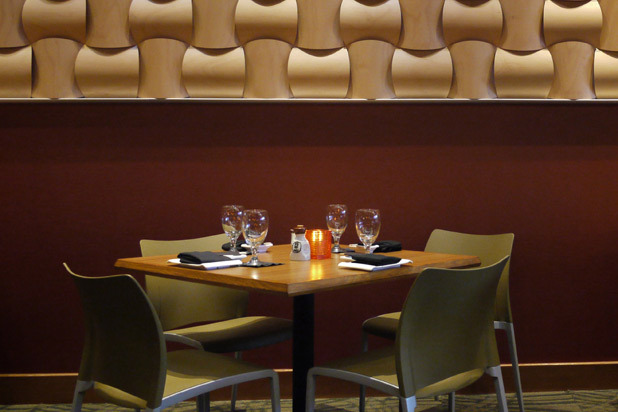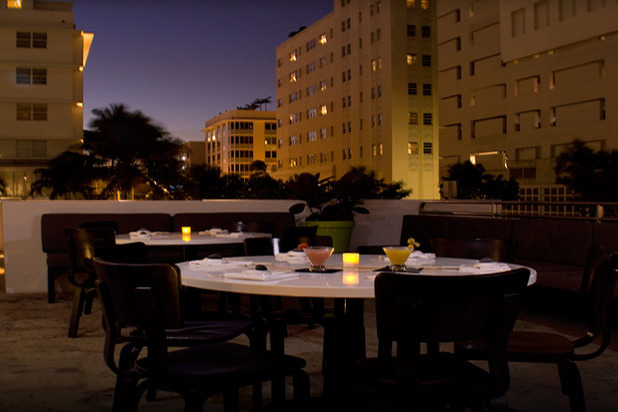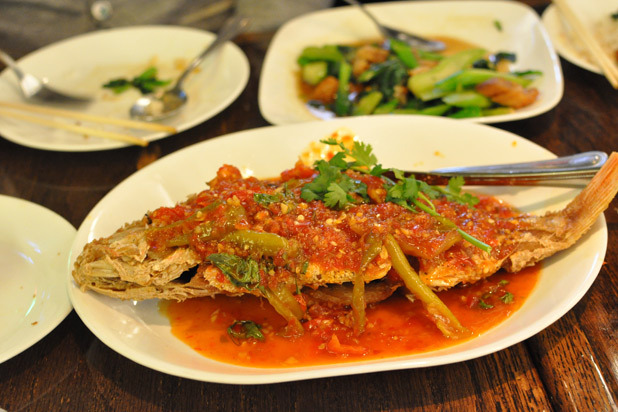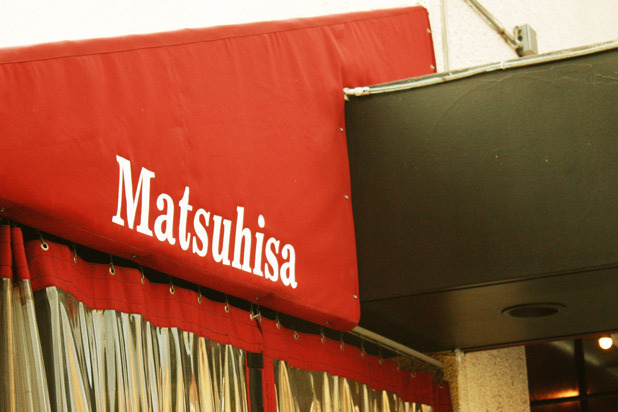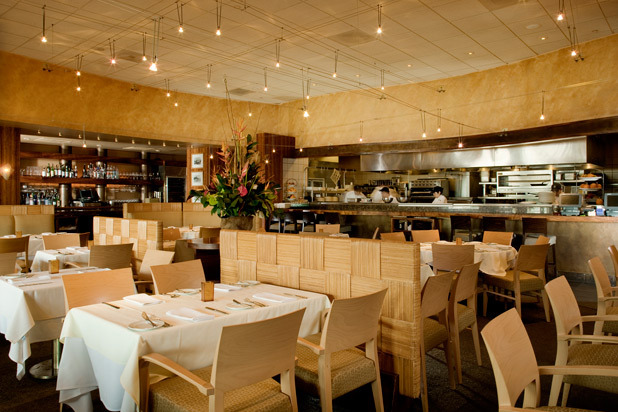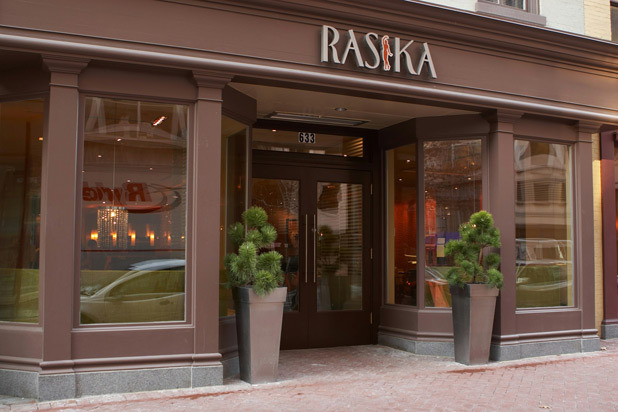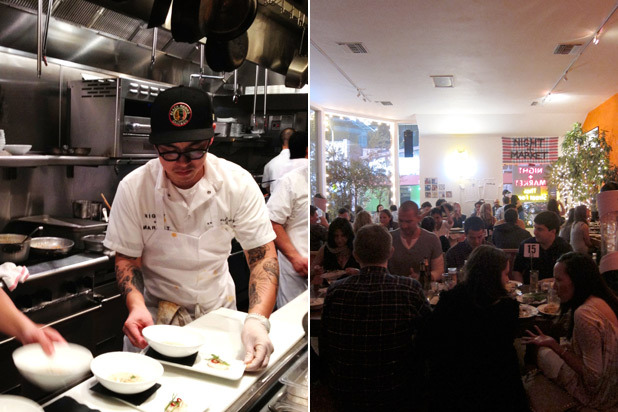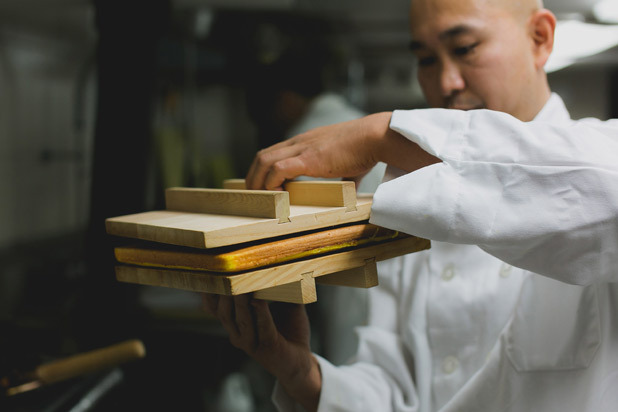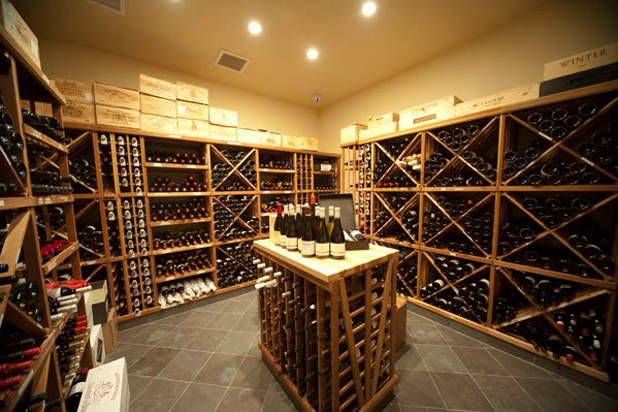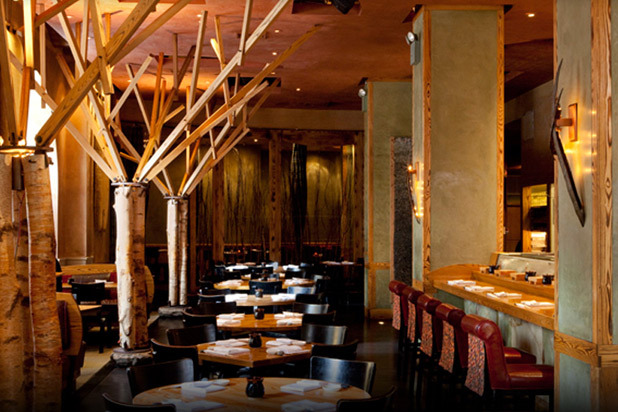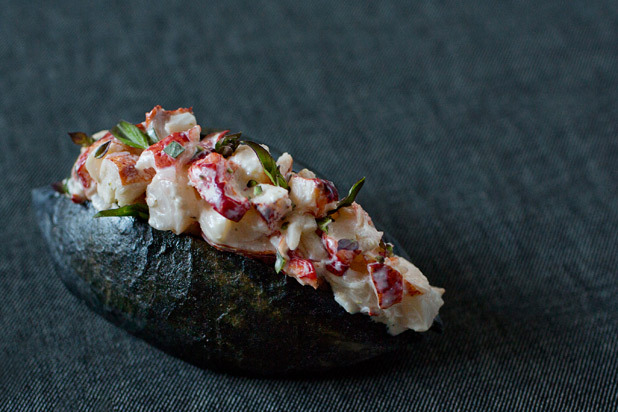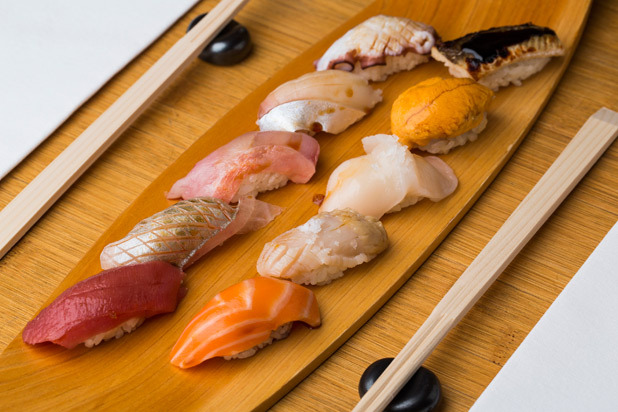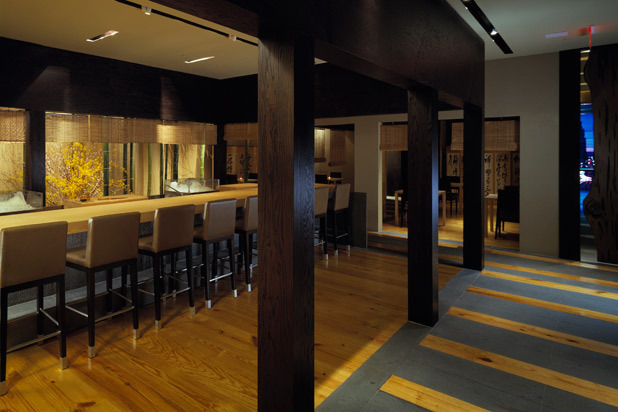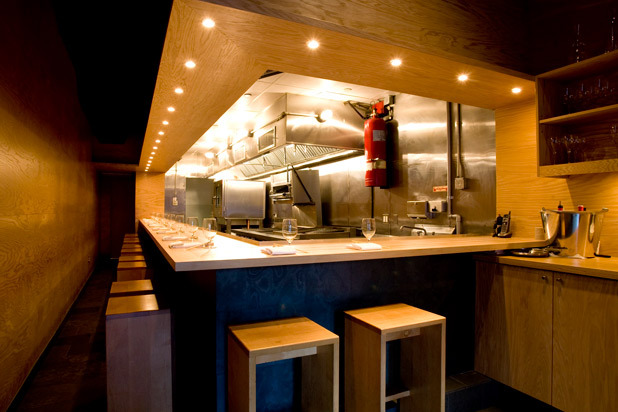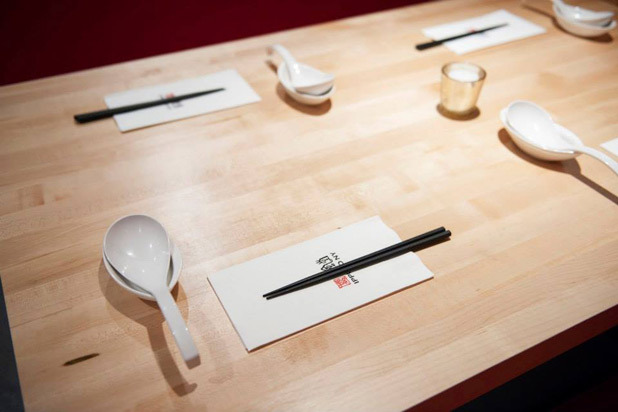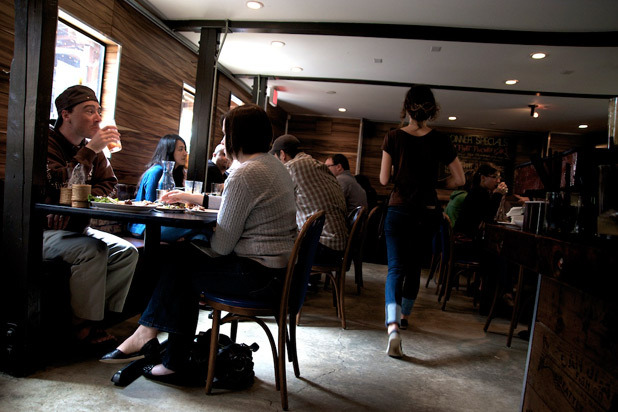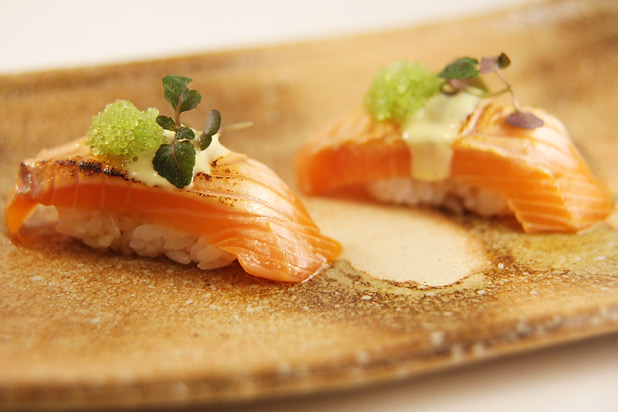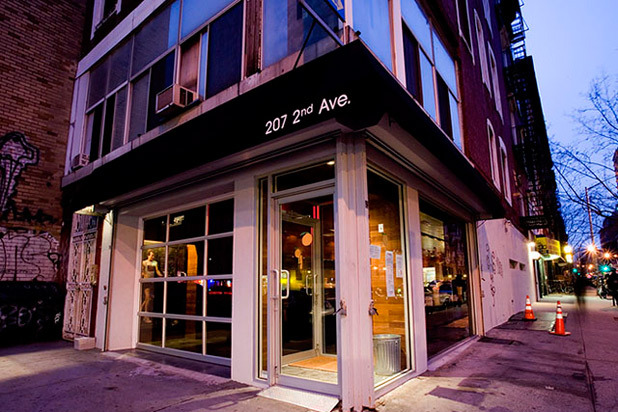America's 25 Best Asian Restaurants (Slideshow)
Buried in a discussion between former New York Times critic Frank Bruni and the world's most famous chef, Ferran Adrià, at the New York City Wine & Food Festival in September was a culinary riddle wrapped in nori somewhere in between the 101 and the 10. Adrià contended that the world's best sushi was in Los Angeles at a place whose name he had forgotten, but that he'd visited with his friend chef José Andrés. Andrés couldn't remember the name, but his assistant suggested it might be Sushi Zo, a small place in a strip mall next to a taco joint.
Sounds like something to be skeptical of. But a visit in October made the case that if strip malls across America are serving that kind of sushi, there's more to Americana than meets the eye. Fine, maybe you shouldn't expect to find high quality sushi next to Red Lobster's along I-40 across the U.S., but when you go to Sushi Zo, expect course after course of fresh, expertly cut, beautifully presented sushi.
22) Kata Robata, Houston
Delicious, creative, and reasonably priced, Kata Robata offers everything you'd want in a Japanese restaurant. While classic sushi preparations and signature rolls are spectacular, you can't miss the winning plated dishes from chef Manabu Horiuchi, including miso lobster macaroni and cheese, uni chawanmushi, miso-crusted bone marrow, fresh catch ceviche, and grilled beef tongue. Save room for dessert; the toasted rice crème brûlée is a true standout.
21) Nobu Miami Beach, Miami
Nobu Matsuhisa is a name you'll find more than once on this list, and for good reason: he's quite possibly the most prolific, famous, and — oh, yeah — talented Japanese chef in America. There are 11 Nobu-branded restaurants in America (and more than that elsewhere around the world), each with a unique layout and menu. In Miami Beach, the restaurant is located inside the Shore Club, with a see-and-be-seen lounge hiding behind a white curtain, an elegant dining room, and a beautiful patio. Standout dishes include mixed seafood ceviche, salt rock Wagyu beef, and wasabi-glazed king crab leg with uni.
20) Jitlada, Los Angeles
All the standard Thai dishes are done very well at this well-known storefront restaurant in Thai Town, but the southern Thai specialties, many of which are found nowhere else in America, are the real draw. Try the oxtail soup, crisp catfish salad, soft-shell crabs with yellow curry, sea bass with caramelized garlic, and whatever else proprietor Sarintip "Jazz" Singsanong recommends — even the beef curry called khua kling Phat Lung, quite possibly the spiciest dish in L.A.
19) SriPraPhai, Queens, New York
Consistently lauded by critics and Yelpers alike as the most authentic Thai restaurant in New York, SriPraPhai boasts a menu as large as its reputation, from papaya salad with dry shrimp and crushed peanuts to fried fish with green mango sauce by way of classic pad thai and sautéed pork leg with chiles, garlic, and basil. Feeling overwhelmed by the spread? Ask a member of the friendly and knowledgeable wait staff for a recommendation, but be forewarned: Things may get spicy.
18) Matsuhisa, Beverly Hills, Calif.
As opposed to Nobu, which is owned by Nobu Matsuhisa and partners including Robert De Niro, Matsuhisa restaurants (in Beverly Hills, Aspen, Athens, and Mykonos) are all owned by the Matsuhisa family, and dining here is a completely different (if equally expensive) experience than dining at one of its more famous cousins. In Beverly Hills, the nearly 30-year old restaurant places more emphasis on perfectly prepared sushi than Nobu's classic hot dishes. A stunningly expansive menu ranges from abalone and smelt egg sushi to octopus carpaccio, soba risotto, king crab claw tempura, and (in the ever-present Nobu nod to his Peruvian training), lamb chops with miso anticucho sauce. Their lunch is one of the city's finest Japanese-style lunches; opt for the bento box.
17) Alan Wong's, Honolulu, Hawaii
Considered a godfather of modern Hawaiian cuisine, Alan Wong creates traditional cultural dishes with a contemporary twist using the finest island-grown ingredients at Alan Wong's, a Honolulu staple. While maintaining close relationships with Hawaii's farmers and agricultural society, Wong has won a James Beard Award for Best Chef in the Northwest and was named Master of Hawaii Regional Cuisine by Bon Appétit, among numerous other awards.
16) Rasika, Washington, D.C.
With its luminous contemporary-style interior, enhanced by vivid Indian art and a varied menu that offers many familiar Indian flavors but avoids cliché, Rasika is one of the most appealing restaurants in our nation's capital. In addition to the expected tandoor oven; utilized for such dishes as swordfish tikka and tandoori salmon as well as more familiar offerings, the kitchen makes good use of a traditional tawa, or griddle, to produce delights like spiced potato and chickpea patties, shrimp-rice pancakes with tomato chutney, and griddled kidney beans with figs and vermicelli. Breads include mint paratha, truffle naan, and goat cheese kulcha, while the sigri (barbecue) preparations include fresh mango shrimp with cashews and ginger and paneer (cheese) brochettes with onions and peppers.
15) Night + Market, Los Angeles
"Our restaurant is very small, very cramped, and very loud," notes Night + Market's website. You can almost imagine chef Kris Yenbamroong warning, "Know what you're getting yourself into!" While Yenbamroong has no formal culinary training, he's not without a Thai food pedigree; he's the son of the family behind the well-respected West Hollywood Thai restaurant Talesai. But Night + Market dances to its own beat, serving Northern Thai street food in the nightclub district of the Sunset Strip with a style and philosophy Yenbamroong describes using Thai term "aharn glam lao," which he explains means making "the most delicious and authentic Thai food to facilitate drinking and fun-having amongst friends." Fried pig tail, fried pig ear with chile and garlic, Isaan-style grilled fatty collar, lots of Thai beer and Mekhong whisky (which is actually more like a rum) are served in a setting that has been described as a G.I. Bar in '70s Bangkok.
14) Sushi Nakazawa, New York, NY
Those obsessed with sushi watched the 2011 documentary Jiro Dreams of Sushi with fascination and even a little bit of envy for the lucky diners sitting at the small bar in the tiny, three-Michelin-star restaurant tucked into a Tokyo subway station run by Jiro Ono, marveling at the many years his sons and apprentices took to master tasks like making rice and egg custard. A similar sense of marvel and fascination is now taking place in New York City at Sushi Nakazawa, the West Village restaurant opened by Jiro's apprentice Daisuke Nakazawa in August of 2013. In just six months, America gained not just one of its best sushi restaurants, but one of its best restaurants period. Your two-hour meal at Sushi Nakazawa will feature about 21 pieces of sushi that Nakazawa prepares with dedication to tradition and ingredients. Prices are $120 for one of the 25 seats in the back, and $150 for a seat to the show at the counter.
13) Lotus of Siam, Las Vegas, Nev.
Serving Northern-style Thai food in a Sin City strip mall, Lotus of Siam has been nominated twice for a James Beard Award and has been called by more than one critic the best Thai restaurant in America. Chef/owner Saipin Chutima began her career at the age of five under her grandmother's tutelage and cooks such inspired cuisine today as charbroiled prawns in tamarind sauce and kao soi-braised short ribs.
12) Yank Sing, San Francisco (Rincon Center)
Yank Sing, the popular dim sum restaurant in the financial district, was founded by Alice Chan in 1958. There are now two locations of this third-generation family-run restaurant, both creating almost 100 items a day to be rolled out into the dining rooms for diners to choose. Both locations are excellent, but some of our Chinese friends prefer this one, where on weekends, the crowd spills out into the Rincon Atrium. Any conversation about San Francisco's best dim sum is dangerous, but you can easily make a case that this is the city's best. Either way, complimenting the merits of Yank Sing's xiao long bao is well-tread ground. Thin dumpling skin, pursed plump dumplings, a dash of vinegar, perfection. Wait, was that a xiao long bao haiku?
11) Nobu, New York
When chef Nobu Matsuhisa opened his eponymous restaurant along with pal Robert De Niro and restaurateur Drew Nieporent in New York's TriBeCa neighborhood in 1994, there was no way he could have imagined that 20 years later he'd be running 28 affiliated restaurants around the world; including four Nobu-branded hotels with two more on the way. But there's a reason why Nobu has become a household name across the globe, and a visit to the Michelin-starred New York flagship tells you all you need to know. The design by architect David Rockwell evokes the Japanese countryside while conveying excitement and energy, and the cuisine fuses classical Japanese with that of Peru and Argentina, where Nobu trained. The standout dishes; including yellowtail with jalapeno, lobster with wasabi pepper sauce, and black cod with miso, are nothing short of legendary.
10) Hinoki & The Bird, Los Angeles
It's not easy to open an immensely successful restaurant from scratch in Los Angeles, but that's exactly what chefs David Myers and Kuniko Yagi did when they opened this Century City hotspot in January 2013. The Silk Road-inspired restaurant is not only a great place to sip a craft cocktail and nosh on snacks like fried oysters and chili crab toast, it's also an experience for all your senses. Myers (who rose to fame with Comme Ça and the Michelin-starred Sona) traveled Japan extensively before opening the restaurant where he fused the finest attributes of Japanese dining (the room is scented with hinoki, a Japanese cedar, and the patio resembles a Japanese garden) with the most fun aspects of American dining. Several of the dishes, including the hinoki-scented black cod with sweet potato and pistachio, coconut-curried mussels with sausage and cauliflower, and lobster roll with green curry and Thai basil, are already signature menu items.
9) Sushi Yasuda, New York, NY
It's a special kind of restaurant that you can walk into, sit down, and without looking at a menu just say to the people preparing your food, "Yes, please," — and know that every bite is going to send you searching for new superlatives. For sushi lovers, that's exactly what Yasuda and its minimal blond-wood dining room represents. To say the fish is fresh just doesn't do the place justice — for many, experiencing the taste and texture of seafood at Yasuda will set the bar for what freshness means. The restaurant's namesake and founder, Naomichi Yasuda, decamped and returned to Japan in 2010, but the standards he established here haven't faltered. His hand-picked successor, Mitsuru Tamura, keeps that Yasuda philosophy alive.
8) Masa, New York
Former New York Times critic Sam Sifton took Masa down to three stars from the four given to it by his predecessor, apparently at least in part because they made him wait outside when he showed up early, didn't explain all the dishes, and didn't pay him much attention after dessert. That doesn't seem to have discouraged the high-rollers who crowd the sushi bar or — losing some of the immediacy of the experience — sit at one of the small tables. Masa's toro-stuffed maki rolls inspire lip-twitching and eye-rolling, and the toro with beluga caviar seems almost worth the price of admission; and what a price that is: The swanky Time Warner Center setting and elaborate omakase-only menu is accompanied by a high bar for entry. At $450 per person before tip or beverages, you're looking at a bill that can easily total more than $1,200 for two.
7) Mission Chinese, San Francisco
Is Mission Chinese Food one of the most overhyped restaurants in America? If you want the opinion of the restaurant's own Korean-born, Oklahoma-raised chef Danny Bowien, the answer is yes. But most fans of the San Francisco original and the currently shuttered second location in New York City's Lower East Side would vehemently argue that the attention and praise are well-deserved. Some might even argue that Bowien — who has been praised for doing to Chinese food "what Led Zeppelin did to the blues," and is known to have flown his entire San Francisco kitchen staff to China to try the real thing — is just being humble and has picked up the mantle of New York's other Korean-American sensation, David Chang. Bowien's kung pao pastrami, cumin lamb breast, and riff on ma po tofu are just some of the signature dishes on a menu of what Bowien himself calls "Americanized Oriental food."
6) Momofuku Ko, New York
It was nearly five years ago when chef David Chang set New York's culinary world aflame when he opened this revolutionary restaurant, and one can argue that the city's restaurant scene hasn't been the same since. A simple counter with a handful of stools and chefs preparing a constantly-changing menu in full view of the diners, the no-frills space had so many clamoring for a seat that they implemented an outrageous online-only reservations system that spawned its own black market. The most upscale and in-demand of Chang's restaurants — which also includes several other Momofukus and Má Pêche — he's decided to close the original restaurant and re-open several blocks away with a counter that seats 25 and four four-tops, and it's one of the year's most anticipated shuffles. We're just hoping we'll finally be able to snag a reservation.
5) Ippudo, New York
The big, slurp-worthy bowls of New York City's best ramen draw customers back again and again to this original Manhattan location in the East Village of one of Japan's best-known ramen chains (there is now a second location on the West Side). Sometimes you can see them sidling up to the bar, drowning themselves in sake to make the wait at the glass-covered ramen bar at the front of the restaurant bearable. Once you do sit down... joy! There's always the Shiromaru Hakata Classic, described as "the original silky 'tonkotsu' (pork) soup noodles topped with pork loin chashu, sesame kikurage mushrooms, menma [fermented bamboo shoots], red pickled ginger, and scallions." But the various limited-time-only specials are most often the fun way to go. A recent example is the Szechuan-style spicy tonkotsu ramen with black sesame sauce, topped with "niku-miso dame" [Japanese meat sauce], chashu pork, cabbage, cilantro, fragrant shrimp oil, and fresh lime.
4) Uchi, Austin
For years, we bought the myth that sushi was an inviolable tradition, understood only by the Japanese and impervious to modernization. Then Nobu Matsuhisa came along to disprove the latter — and American chefs like Tim Cushman at O Ya in Boston and Tyson Cole at Uchi and Uchiko in Austin tossed both notions out like empty sake bottles. There's no telling what classicists would make of Cole's big eye tuna with goat cheese, fuji apple, and pumpkin seed oil; tempura shrimp spring roll with Vietnamese fish sauce and grapes; or pork jowl with Brussels sprout kimchee, romaine, preserved lemon, and crème fraîche; but the hungry Austinites who crowd this rustic house-turned-restaurant obviously eat it all up.
3) Pok Pok, Portland, Ore.
When Andy Ricker opened Pok Pok in 2008, he took the Pacific Northwest, and many of the nations most devoted eaters, by storm with his uniquely refined approach to Southeast Asian street food. In fact, his Vietnamese-inspired chicken wings and boldly flavored array of house specialties are in such hot demand that Ricker opened a location dedicated specifically to wings in New York City, which has since transformed into a shop specializing in Thai-style noodles. In April 2012, he opened Pok Pok NY on Brooklyn's off-the-beaten-path Columbia Street Waterfront, and it proved so popular that last year it was forced to move into bigger digs up the street — but his Portland original remains Ricker's definitive establishment.
2) O-Ya, Boston, Mass.
Chef Tim Cushman brings innovative sushi and related new-Japanese fare to his menu with imagination and flair, serving these and other truly wonderful dishes that are accompanied by a large choice of excellent sake and wine in an understated dining room whose simplicity belies the complexity of flavors on the plate. Cushman won the 2012 James Beard Award for Best Chef: Northeast. You can expect to enjoy dishes like balsamic chocolate kabayaki, claudio corallo raisin cocoa pulp, sip of aged sake and warm eel with thai basil, kabayaki, fresh kyoto sansho.
1) Momofuku Ssäm Bar, New York
Meals at this ever-evolving East Village hot spot have wowed critics and won faithful followers since the beginning, and no wonder. David Chang's food offers bold, Asian-inspired flavors — like his duckaholic lunch and popular bo ssäm dinner (slow-cooked pork shoulder, oysters, rice, kimchee, and sauces to be wrapped in bibb lettuce leaves). Chang continues to be the culinary cool kid while cementing his status as a top-tier chef by constantly expanding his empire, and everything he touches seems to turn to gold (his high-tech cocktail bar kicked off with Dave Arnold, Booker and Dax, is already ranked among the city's finest). As an influence on younger chefs, as an animator of the downtown New York restaurant scene, and as a really good cook, Chang deserves the top spot on this list.

